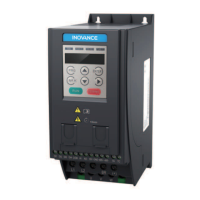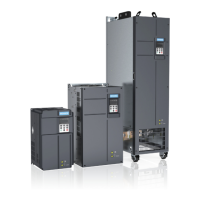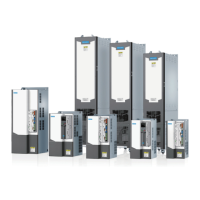Quick Operation
‑35‑
Pa
rame
ter
Code
Parame
ter
Name
De
fault
Value Range
Description
C2‑
00
Auto‑
tuning
selec
tion
0 0: No auto‑
tuning
1: Partial static
auto‑tuning of
asynchronous
motor
2: Dynamic
auto‑tuning of
asynchronous
motor
3: Complete
static auto‑
tuning of
asynchronous
motor
5: Dead zone
auto‑tuning
14: UV gain
error auto‑
tuning
Dynamic auto‑tuning and inertia auto‑tuning
are suitable for occasions where the motor can
rotate without load. If little load torque is
output after the motor rotates, the scenario
will be regarded as no load even through the
motor does not completely disconnect from
the load mechanism.
Static auto‑tuning is suitable for situations
where the motor cannot rotate.
In dynamic auto‑tuning, all parameters will be
tuned to ensure optimal operating
performance.
Differences between different kinds of auto‑
tuning modes are as follows:
Compared with dynamic auto‑tuning, in the
partial static auto‑tuning mode, inertia and
friction torque parameters are not tuned, and
the mutual induction and no‑load current are
less accurate. Compared with the complete
static auto‑tuning mode, in the partial static
auto‑tuning mode, mutual induction and no‑
load current are not tuned.
6.3.7 Setting the Command Source
Set b1‑00 or b3‑00 to select the command source of the control channel. The
command source is the source or input mode of commands to control the startup,
stop, forward running, reverse running, and jogging of the AC drive.
The following procedure takes setting the command source to the operating panel as
an example.
1. Set b1‑00 to 0 and press
to set the command source of control channel 1
to the operating panel.
2. Set b5‑01 to 10 Hz and press
. The operating panel displays the set
frequency 10 Hz.
3. Press
to start the AC drive (the RUN indicator is on). Then the drive runs
at the frequency of 10 Hz.

